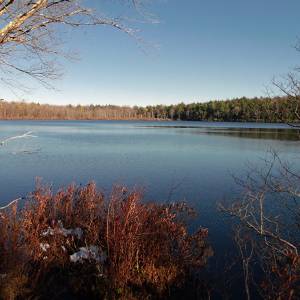Seasonal variation in the relative strength of bottom-up vs top-down effects in pelagic cladoceran populations identified through contribution analysis of birth rate

Submitted: 24 April 2023
Accepted: 5 August 2023
Published: 7 September 2023
Accepted: 5 August 2023
Abstract Views: 1113
PDF: 213
HTML: 11
HTML: 11
Publisher's note
All claims expressed in this article are solely those of the authors and do not necessarily represent those of their affiliated organizations, or those of the publisher, the editors and the reviewers. Any product that may be evaluated in this article or claim that may be made by its manufacturer is not guaranteed or endorsed by the publisher.
All claims expressed in this article are solely those of the authors and do not necessarily represent those of their affiliated organizations, or those of the publisher, the editors and the reviewers. Any product that may be evaluated in this article or claim that may be made by its manufacturer is not guaranteed or endorsed by the publisher.
Similar Articles
- Luciana Cibils Martina, Romina Principe, Noemí Gari, Effect of a dam on epilithic algal communities of a mountain stream: before-after dam construction comparison , Journal of Limnology: Vol. 72 No. 1 (2013)
- Vanda Šorfová, Vít Syrovátka, The Chironomidae of the Western Carpathian helocrenes: Metacommunity structuring and its drivers in unique habitats , Journal of Limnology: Vol. 77 No. s1 (2018): Recent advances in the study of Chironomidae: An overview
- Victor R. Alekseev, Douglas G. Haffner, James J. Vaillant, Fatimah M. Yusoff, Cyclopoid and calanoid copepod biodiversity in Indonesia , Journal of Limnology: Vol. 72 No. s2 (2013): Freshwater Invertebrates of Southeast Asia
- Michal Grabowski, Kamil Hupało, Aneta Bylak, Krzysztof Kukuła, Joanna Grabowska, Double origin of the racer goby (Babka gymnotrachelus) in Poland revealed with mitochondrial marker. Possible implications for the species alien/native status , Journal of Limnology: Vol. 75 No. 1 (2016)
- Marcela Cornejo-D'Ottone, Ricardo Figueroa, Oscar Parra, Seasonality of the N2O cycle of the Biobío River during the megadrought , Journal of Limnology: Vol. 78 No. 1 (2019)
- Viera STRAŠKRABOVÁ, Cristiana CALLIERI, Presentacion CARRILLO, Luis CRUZ-PIZARRO, Jan FOTT, Petr HARTMAN, Miroslav MACEK, Juan Manuel MEDINA-SÁNCHEZ, Jirí NEDOMA, Karel ŠIMEK, Investigations on pelagic food webs in mountain lakes - aims and methods , Journal of Limnology: Vol. 58 No. 2 (1999)
- Kay Van Damme, Artem Y. Sinev, Tropical Amphi-Pacific disjunctions in the Cladocera (Crustacea: Branchiopoda) , Journal of Limnology: Vol. 72 No. s2 (2013): Freshwater Invertebrates of Southeast Asia
- Yesely M. Hurtado, Cesar E. Tamaris-Turizo, Manuel J. López Rodriguez, J. Manuel Tierno de Figueroa, Nymphal feeding habits of two Anacroneuria species (Plecoptera, Perlidae) from Sierra Nevada de Santa Marta, Colombia , Journal of Limnology: Vol. 78 No. 1 (2019)
- Letizia GARIBALDI, Valeria MEZZANOTTE, Maria Cristina BRIZZIO, Michela ROGORA, Rosario MOSELLO, The trophic evolution of Lake Iseo as related to its holomixis , Journal of Limnology: Vol. 58 No. 1 (1999)
- Kay Van Damme, Eugeniya I. Bekker, Alexey A. Kotov, Endemism in the Cladocera (Crustacea: Branchiopoda) of Southern Africa , Journal of Limnology: Vol. 72 No. 3 (2013)
<< < 37 38 39 40 41 42 43 44 45 46 > >>
You may also start an advanced similarity search for this article.

 https://doi.org/10.4081/jlimnol.2023.2142
https://doi.org/10.4081/jlimnol.2023.2142





